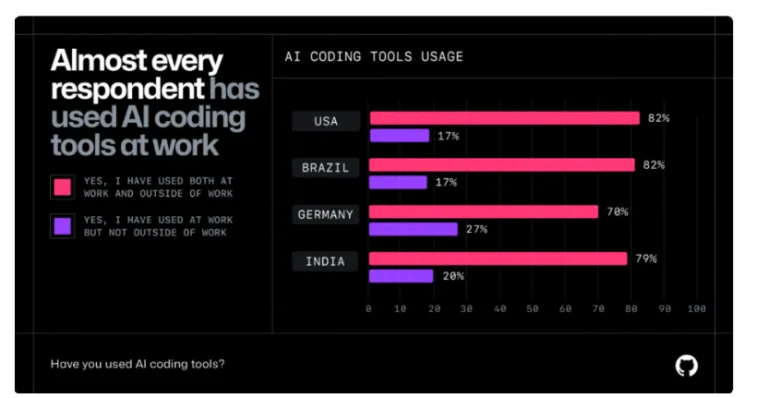Data Without the Drag: How Intelligent Automation Is Changing Enterprise Operations
In today’s enterprise landscape, data isn’t scarce-it’s overwhelming. Every process, customer touchpoint, and supply chain event generates new data. Yet, for many operations and data leaders, this constant flow feels more like a burden than an advantage.
That’s because most enterprises still rely on manual or outdated systems to manage their data. From cleansing and categorization to preparation and integration, data workflows are often messy, slow, and inconsistent. For organizations looking to scale, that’s a major bottleneck.
The solution? Intelligent automation that can automate data processes from start to finish.
Why Data Operations Are Breaking Down
As businesses expand, their data pipelines tend to become more complex. Different departments adopt different tools, vendors provide data in inconsistent formats, and legacy systems keep valuable information locked in silos. This leads to:
- Manual rework
- Inaccurate reporting
- Delayed decision-making
- Data quality issues that cascade across teams
Operational and data executives know this problem well. They’re not lacking insights. They’re spending too much time trying to extract them. It’s not a talent problem. It’s a system problem.
The Value of Automation in Data Workflows
Automating data processes means more than just speeding up tasks. It creates an entirely new way of working. When done right, it allows your team to:
- Eliminate manual data prep and formatting
- Unify structured and unstructured data across platforms
- Apply consistent rules for classification and labeling
- Continuously monitor data quality
- Feed clean data directly into forecasting and decision models
In short, you shift from managing data to using it.
Modern enterprises are now investing in solutions that can Automate data processes at scale and with intelligence. These systems are known as digital workers, AI-powered agents that can handle both technical processing and analytical decision-making without constant human input.
From Messy Inputs to Meaningful Outputs
The most powerful automation solutions don’t just move data. They understand it. They identify patterns, find anomalies, and provide traceable reasoning behind each action. This is a major upgrade from traditional automation tools that rely on static rules or scripts.
For example, a digital worker can take in raw sales data from multiple regions, clean and categorize it automatically, adjust for anomalies like promotions or weather events, and feed it into a demand forecast, all without manual review.
Solutions like causaLens are leading the way in this space by building custom digital workers for enterprise clients. Their systems are custom-built for their customers, integrating simple, flexible automation seamlessly into their everyday repetitive processes, or automating more complex processes like root cause analysis and demand forecasting.
Enterprise Use Cases That Deliver Impact
Here are some high-value areas where organizations are using digital workers to automate data processes:
- Data cleaning: Detecting and fixing inconsistencies at scale
- Data enrichment: Merging external data with internal systems for deeper insights
- Categorization: Automatically tagging, labeling, and classifying data by business context
- Data prep for reporting: Creating ready-to-use datasets for dashboards and compliance
- Forecasting inputs: Automating the flow of reliable data into predictive models
All of these areas previously required hours of analyst time, multiple back-and-forths across teams, or expensive third-party services. With intelligent automation, they become background processes that quietly improve performance.
Common Challenges Solved Through Automation
Data issues don’t usually show up all at once. They creep in over time as systems age, teams change, and processes scale beyond what was originally designed. Here are some signs that it’s time to act:
- Reporting takes longer every quarter
- Analysts spend more time fixing data than finding insights
- Teams can’t agree on which metrics are accurate
- You’ve added more tools, but quality hasn’t improved
- Forecasts are off and no one knows why
Digital workers built with causal reasoning help solve these issues at the root. They standardize processes, improve data trust, and remove uncertainty from decision-making.
The causaLens Approach: From Data Mess to Intelligent Systems
What sets causaLens apart is how their digital workers are tailored to each client’s unique operations and data landscape. Unlike off-the-shelf tools that require you to adapt to them, causaLens adapts to you.
Clients like Cisco, Johnson & Johnson, and Mitsubishi Electric rely on causaLens to unify and streamline complex data operations, making their entire workflow more efficient, transparent, and scalable.
causaLens develops and deploys digital workers up to ten times faster than traditional consultancies or internal development cycles. That means value shows up faster, often in weeks, not quarters.
A Smarter Path to Operational Maturity
As businesses grow, they tend to add tools, teams, and manual checks. But at a certain point, this leads to diminishing returns. You don’t need more spreadsheets or dashboards. You need systems that can handle complexity without multiplying it.
Automating data processes with intelligent digital workers is how modern operations leaders are breaking out of this cycle. By transforming how data flows through the business, they’re unlocking faster decision-making, tighter compliance, and better forecasting across the board.
And because these systems are adaptable, they continue to improve as your business evolves.
Final Thoughts: Automate What Matters Most
Enterprises don’t just need more data. They need the ability to trust, use, and act on it without drowning in it. Digital workers allow you to automate data processes in a way that delivers clarity, speed, and strategic value across your entire organization.
If your team is spending too much time managing data and not enough using it, causaLens offers a smarter way forward. Their custom-built digital workers help transform your data operations from a bottleneck into a competitive edge.






